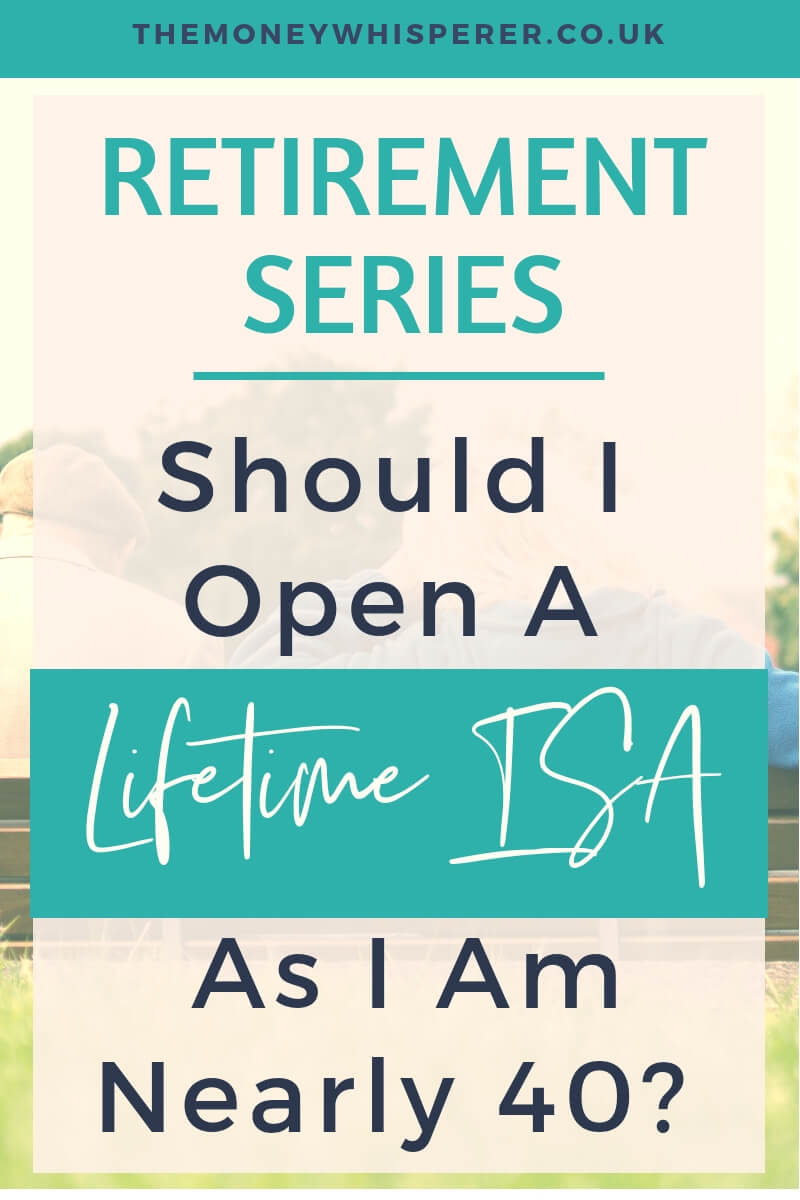This post may contain affiliate links which means that if you click through to a product or service and then buy it, I receive a small commission. There is no additional charge to you.
Please be aware that any form of stock market investment can go up and down over time. You may want to consider advice from a qualified financial adviser before opening a Stocks and Shares ISA.
Rate correct at time of publishing but could be subject to change.
Different types of Individual Savings Accounts (ISAs) have been introduced by the Government over the years to encourage people to save. The incentive to squirrel away your money is that the income derived from all investments held within ISA products is completely free of tax.
I have written in the past about some of the different types of ISAs; the difference between cash ISAs and stocks and shares ISAs, how we save for our children with Junior ISAs, and a guide to Innovative Finance ISAs.
One type of ISA which I haven’t talked about to date in any detail, except for a brief mention, is the Lifetime ISA (LISA).
When I looked in to them when they were first introduced in April 2017, only a handful of Lifetime ISA providers were offering them. Almost two years on and there is more choice on the market so I am revisiting my research.
In large part, this decision has been driven by my age. As I approach 40, I am conscious that my eligibility to open a Lifetime ISA is almost up as you need to be between the ages of 18 and 39 to open an account.
So it will soon be a case of now or never!
What Is A Lifetime ISA?
A Lifetime ISA is essentially another type of ISA. They can hold cash or stocks and shares.
A LISA enables you to save up to £4,000 tax-free each year, which is topped up by a 25% bonus* from the Government (to a maximum of £1,000 a year). The £4,000 LISA limit forms part of your annual overall ISA limit (currently £20,000 per annum: 2018/19) which means you can have a LISA as well as other ISAs.
Importantly, the LISA is designed to incentivise saving for two of life’s key milestones:
- purchasing your first home and/or
- retirement.
Whilst you have to be aged between 18 and 39 in order to open a LISA, you can save in to a LISA until your 50th birthday. The account can stay open after then and you can’t make any more payments into it, but you will earn interest on the savings until you can withdraw at 60.
This means that if you opened a LISA account on your 18th birthday, you could potentially benefit from £32,000 in free Government bonus money. That’s not to be sniffed at!

Withdrawals And Transfers
Once you have money invested in a LISA, you can not withdraw it in the same way as a regular, easy access ISA. The 25% Lifetime ISA bonus is designed to incentivise you to keep the money in for the long-term.
Any withdrawals will be subject to a 25% withdrawal charge, except if you are:
- using it towards a first home – which must be worth under £450k and bought using a residential mortgage. (You are able to use the same LISA account to buy your first home and then continue to use the account to save for retirement).
- aged 60
- terminally ill with less than 12 months to live
- transferring to another Lifetime ISA with a different provider
I am already a home-owner so for me, an investment in a LISA would be a long-term savings strategy, where I would be benefiting from the Government’s 25% bonus for the next almost 12 years whilst I could pay in to it. After that, I’d still benefit from interest/growth between the ages of 50 and 60.
But I already have a pension which I am saving in to for retirement…
Can You Have A LISA And A Pension?
The answer is yes. Having either a LISA or a pension does not stop you opening the other.
Retirement savings are a feature topic for me this year. It is crucial that as a nation we start to face up to the reality that we are not saving enough for the future.
The LISA is a complimentary product to a pension which is designed to get people saving for the future. Anything which encourages people to think about starting a savings pot for their future has to be good news.
Not understanding the terms used to describe financial products is one of the key things which people tell me makes them shy away from doing more with their money. They stick with what they understand.
I know from the conversations I have had with lots of my friends who have no pension that they put off setting one up for so long because they just don’t understand them.
My friend Emma told me that she found the literature on pensions to be full of jargon; this made her so worried about making the wrong decision. In comparison, she found the LISA to be very straightforward and easy to understand. It’s been a great starting point to get her into a savings habit, and has subsequently lead to her feeling more confident to explore a pension also.

Emma says that the LISA cap of £4,000 per year (topped up to £5,000 with the 25% bonus) helped her to solve the question of how much to put away for her future. She felt that it was an achievable amount; she aims to maximise her LISA contributions, as well as contribute in to a newly opened pension.
Is A LISA Or A Pension Better?
It really doesn’t have to be a case of one or the other. People can open a LISA to boost their pension fund as the majority of people’s pensions won’t be enough for them to live the way they’d like to in retirement.
Pensions have unique features which make them an appealing savings mechanism; notably the tax relief on contributions, and for those within a workplace scheme, employer contributions.
A direct comparison of the Lifetime ISA with pensions is tricky, because while everyone is entitled to the 25% bonus on the Lifetime ISA, the ‘bonus’ on a pension, known as “tax relief”, is related to your income tax bracket. Income tax brackets range from 20% to 45%.
The money which you save in to a pension is locked away until you are 55 (expected to rise to 57 in 2028). You can not access it, full stop. In comparison, you can’t access the money in a LISA without penalty unless you use it to buy a house. But you could access your funds if you really needed them before 60, although you would incur the 25% withdrawal charge.
See the example below:
If you pay in £1000 and get £250 bonus = £1250
If you withdraw, you are charged 25% on the full balance so £312.50
Your remaining balance will be £937.50, so less than you paid in.
Most pension schemes only let you take 25% of your pension pot tax-free once you reach pension age. The tax treatment of a LISA is favourable compared to a pension in this regard as after your 60th birthday you can take out all of your savings tax-free.
I am now self-employed and therefore no longer benefit from employer contributions in to any workplace pension. I am currently paying in to a pension.
The Lifetime ISA is a great additional savings mechanism for the reason that I could benefit from 25% bonus on my contributions, and take that money out completely tax-free aged 60.
You know that saying ‘don’t put all your eggs in to one basket’ – well I am someone who likes to have fingers in a few pies when it comes to my finances.
Ultimately, I don’t want to touch my retirement savings until I am older anyway, so having this money tied up in a pension or LISA until 57 and 60 respectively is actually a huge positive for me.
I see no downside to opening a LISA before I turn 40, even if my pension is my primary means of saving for retirement. Once it is open, I then have the option to save for the next 12 years. If I get to 40 and haven’t opened one, that option is gone forever!
So that’s the end of my thoughts on the LISA.
Where can I get a LISA?
This is a collaborative post.
Looking at the current rates available on cash LISAs (as at March 2019), 1% is a pretty standard rate across the board.
When there isn’t much to differentiate between provider, when I take out financial products, I like a freebie or a bonus!
With The Nottingham Building Society, as well as 1% interest, the account holder becomes a ‘qualifying member’ of The Nottingham’s loyalty programme, ‘Member Rewards’. See their website for more information on the rewards and discounts for qualifying members.
To qualify for Member Rewards you have to have had a savings account with the building society for 12 months or more with £500 in it. As you cannot use your funds in a LISA for a first home within the first 12 months without incurring a fee, those signing up for a LISA with The Nottingham will be a ‘qualifying member’ by the time they come to buy their new home.
Newly launched online, you can apply here at the click of a button.
*The maximum you can save each tax year is £4,000. The Government will pay a 25% bonus of up to £1,000 each tax year. You can withdraw money from a Lifetime ISA to buy your first home, or at age 60. Other withdrawals will usually mean a 25% Government charge, so you could get back less than you put in. Full terms and conditions are available at thenottingham.com. Nottingham Building Society, Nottingham House, 3 Fulforth Street, Nottingham NG1 3DL.


